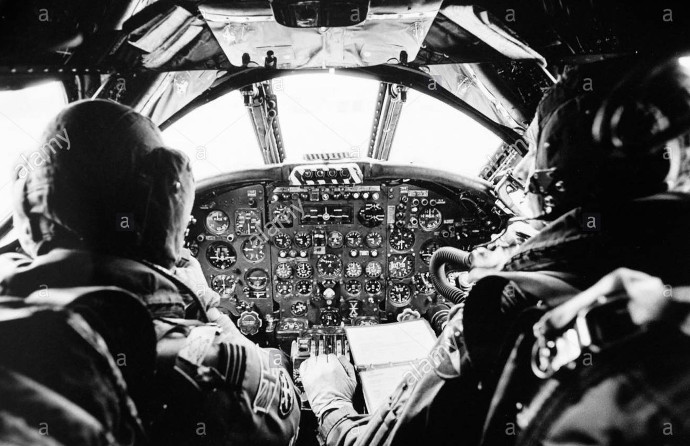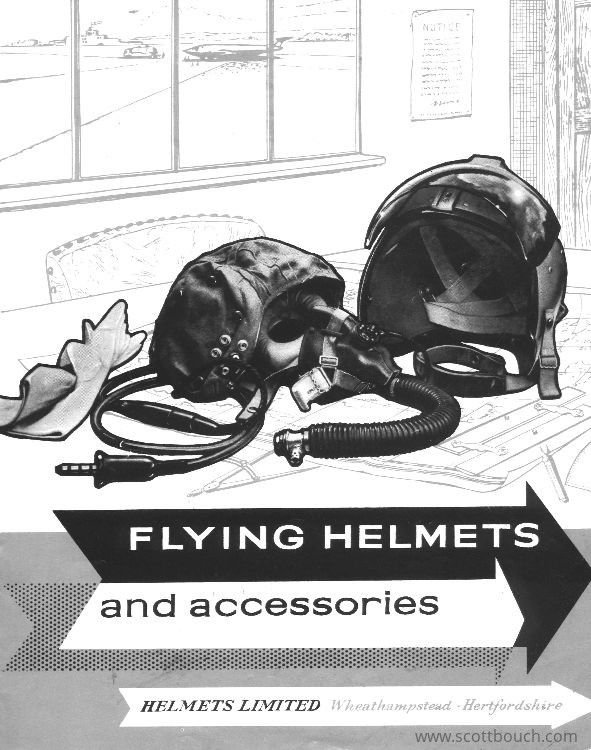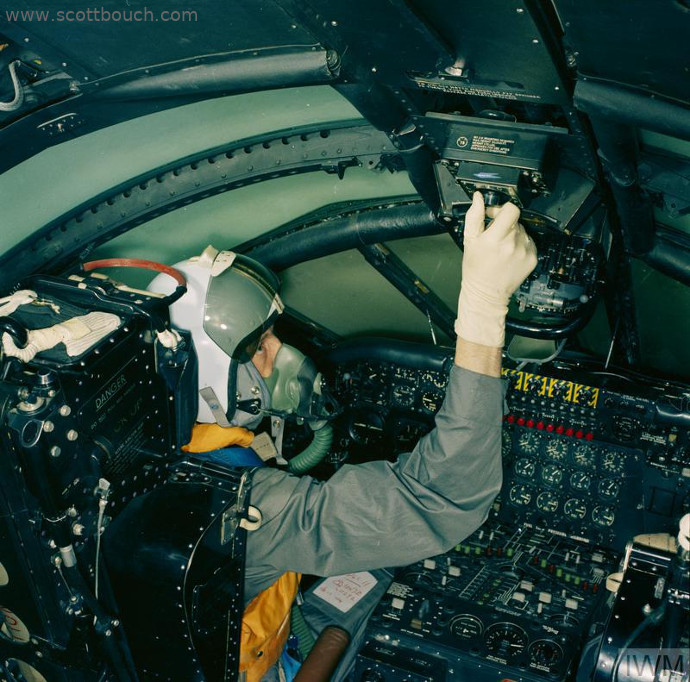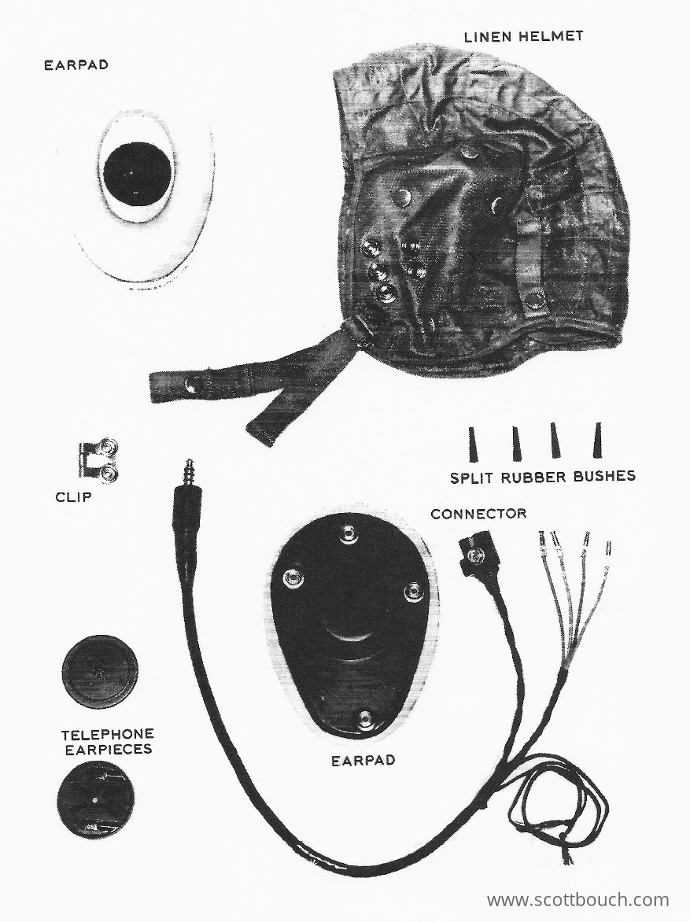British G-Type Aircrew Flying Helmet
Stores Ref No's: 22C/1725 Size 1 | 22C/1726 Size 2 | 22C/1727 Size 3 | 22C/1728 Size 4
This has possibly been the longest serving helmet in RAF or RN service. Starting out in the early 1960's (evidence), they were still flying into the early 1990's in the last of the Avro Shackletons and display Vulcan, and are still in use today in decompression chamber training.
The G-Type helmet # was the last in the line of non-protective (Fabric / leather) helmets, sometimes known as "cloth caps". It superceded the F-Type helmet as it's additional pop studs could mount the support harness' of the A-13A/2 Oxygen Mask, M-Type Mk2, and later oxygen masks.
It provides warmth, sound protection, communications, and mounting points for an oxygen mask and goggles, but does not offer any impact protection.
Most famously used in the V-Bombers for many years as the outer protective Mk1A helmet could be taken off during long flights. The image below (from here) was taken in Vulcan XH558's cockpit on her final RAF flight to Bruntingthorpe in 1993:

Advertisements / Brochures
1960 Helmets LTD brochure for the MK1A(M) and G-Type helmet:

Service Photographs
RAF Victor B.1 1959
G-type helmet in use in a Victor B.1. Worn with Mk1A(M) outer protective helmet, and A-13A/2 Oxygen Mask. Image from IWM.

RAF/RN AP Resources
AP108F-0204-1, Chapter 2-3, Figure 1 (Amdt 10, April 1990)
The image below illustrates the components of the G-Type helmet. Note the AP is from 1990.

AP1182E, volume 1, Section 1, Chapter 5, Paragraph 35 (AL 99, July 1963)
This AP mentions the G-Type entering service, replacing the F-Type. Note: it is dated 1963.
Quote:
The Type G helmet is similar in design to the type F except that it is more robust and the neck adjustment is permanently attached to the head harness and is non-elastic. The helmet may be worn in all conditions in which the Type F is suitable and will eventually replace it.